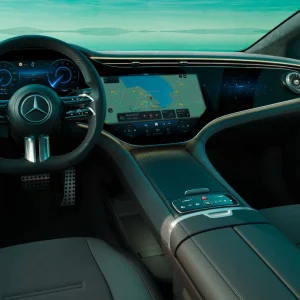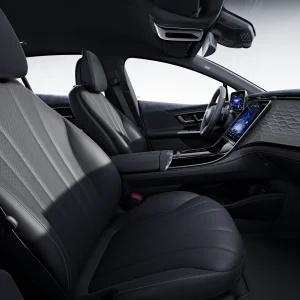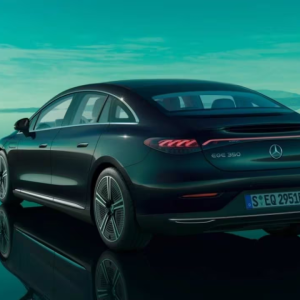6.9/10
Our Tier Classification:
Type of car:
Country of origin:
Make:
Share it:
Car manufacturers often offer different variations of the same model, allowing you to customize your vehicle to suit your preferences. Our goal is to showcase the range of performance options available, from the most basic to the most advanced. For precise pricing and specifications of each variant, please visit the official manufacturer’s website through the ‘prices section’ links by country.
Performance
Consumption
Acceleration (0-100km/h / 60mph)
Top Speed
Power
Power (kW)
Battery capacity
Dimensions
Doors
Max. seats
Lenght
Height
Width
Width with mirrors
Weight
Trunk Volume
Frunk Volume
We aim to provide both the manufacturer’s estimated range, as listed on their official websites, and a realistic range based on actual driving conditions. This includes the impact of weather, as well as the use of heating, air conditioning, and other factors that could affect performance. This data is supported by data from official manufacturer websites, user feedback, and EV-Database.org.
Estimated Range by manufacture
Minimal Estimated range
Maximal Estimated range
Disclaimer: The standard conditions for our range estimates assume an ambient temperature of 23 degrees Celsius (73.4 Fahrenheit) without the use of air conditioning. Please note that these ideal conditions are not always practical, and the real-world range may be lower.
Approximate actual distance given by feedback
Real range - City ❄️
Real range - Highway ❄️
Real range - City ☀️
Real range - Highway ☀️
Disclaimer: We also consider ‘worst-case’ scenarios. For ‘Cold’ conditions, we assume -10 degrees Celsius (14 Fahrenheit) with heating on, and for ‘Hot’ conditions, we maintain 23 degrees Celsius (73.4 Fahrenheit). We include the effects of different driving environments, such as city and highway, with speed limits adhered to as per US and European standards (excluding unlimited German autobahns). This data is corroborated by EV-Database.org and feedback from real users.
Charging times
Charging time 0-100% - Home (2.3 kW)
Charging time 0-100% -Wallbox (11 kW)
Charging time 10-80% Fast charging (175kW)
There are several methods of charging electric vehicles, which we categorize into three types: standard home plug, home wallbox, and highway superchargers (CCS).
Home plug: Generally offers a charging capacity ranging from 1.5 to 3.7 kWh. We use 2.3 kWh as an average reference, but actual rates may vary depending on the vehicle model.
Wallbox: Although wallboxes can support up to 22 kWh, government regulations in some countries may require special permission for higher capacities. Therefore, we display the maximum standard output of 11 kWh that can be used without additional permissions.
Supercharger CCS: Depending on the service provider and car model, these chargers typically offer around 175 kWh, but this can vary based on weather conditions and car specifications. Some cars have a maximum kWh limit to prevent malfunctions, so if a charger offers 175 kWh or 150 kWh and your car only shows a maximum of 100 kWh, don’t be alarmed.
All this data is coming from an average calculation between users’ feedback and EV-Database.org
The Mercedes Benz EQE marks a significant stride in the electric vehicle (EV) revolution, brought to you by none other than Mercedes-Benz, a stalwart in luxury automaking. Launched as a sibling to the larger EQS, this EV sedan is part of Mercedes’ ambitious plan to electrify its lineup. The EQE, often touted as the electric equivalent of the esteemed E-Class, offers a blend of luxury, innovation, and performance that aims to redefine the executive sedan segment. Introduced in 2021, the EQE is not just a car; it’s a statement of future mobility, combining traditional Mercedes luxury with cutting-edge technology. Let’s buckle up and zoom into what makes the EQE a sparkling jewel in the crown of EVs.
Relevant Specifications of Mercedes Benz EQE
Range
The Mercedes Benz EQE boasts an impressive range, a pivotal factor for any EV enthusiast. The EQE 350, for example, is equipped with a 90.6 kWh battery that promises a range of up to 660 kilometers (410 miles) under the WLTP cycle, which translates roughly to a generous day-to-day driving distance before you need to plug in. When stacked against competitors like the Tesla Model S or the BMW i4, the EQE holds its own, particularly in offering a balanced combination of efficiency and luxury. While some rivals might edge it out slightly in pure range, the EQE counters with its superior ride quality and brand prestige.
Battery Life & Charging Time
In the world of EVs, the Mercedes Benz EQE doesn’t just play; it plays to win. The battery life is designed for longevity, with Mercedes promising that the battery will retain at least 70% of its capacity even after ten years or 250,000 kilometers (155,000 miles). Charging the EQE is equally efficient; it supports DC fast charging up to 170 kW, allowing the battery to charge from 10% to 80% in just over 30 minutes. Compared to other EVs in the market, the EQE’s charging capabilities are competitive, ensuring that you spend more time driving and less time waiting.
Performance
The Mercedes Benz EQE delivers exhilarating performance that’s typical of electric vehicles, with instant torque and swift acceleration. The EQE 350 variant, for example, can dart from 0 to 100 km/h (0-62 mph) in just 5.6 seconds. While this may not shatter any records when put side-by-side with the more aggressive Tesla models, it strikes a fine balance between everyday usability and sporty ambition. For those who prioritize a smooth, silent ride that’s punctuated with bursts of speed when desired, the EQE is a fit.
Cost of Ownership
Owning a Mercedes Benz EQE is a commitment not just to luxury but also to economic sensibility in the long run. The overall cost of ownership is offset by lower maintenance requirements typical of EVs, and with fewer moving parts than a traditional combustion engine vehicle, repairs are less frequent and often less costly. Additionally, depending on your region, owning an EQE might qualify you for tax breaks and incentives designed for electric vehicle owners. While the upfront cost might be higher than some competitors, the long-term savings on fuel and maintenance can make the EQE a wise economic choice.
Technology and Interior Comfort
Inside the Mercedes Benz EQE, technology and luxury intermingle to create a sanctuary of comfort and innovation. The centerpiece is the MBUX Hyperscreen: an optional, nearly door-to-door digital dashboard and infotainment system that offers intuitive control and customization. The interior is crafted with high-quality materials and advanced features like HEPA filtration to improve air quality, showcasing Mercedes’ commitment to comfort and health. When compared to other EVs, the EQE stands out with its focus on high-tech amenities combined with ergonomic and plush seating arrangements that are hard to top.
Why Should I Buy Mercedes Benz EQE
- Ultra-modern design with cutting-edge technology.
- Superior interior comfort and advanced digital features.
- Reliable battery life with efficient charging options.
- Brand prestige and luxurious appeal.
- Potentially lower long-term ownership costs.
Why Should I NOT Buy Mercedes Benz EQE
- Higher initial cost compared to some EV competitors.
- Less sporty performance than some dedicated performance EVs.
- Heavier and bulkier than some more agile competitors.
- Limited service locations specialized in EV technology.
Conclusion
The Mercedes Benz EQE is an exemplar of how traditional luxury can meet modern electric efficiency in a package that appeals to discerning drivers who value comfort, style, and sustainability. While it may not be the fastest on the track nor the cheapest on the market, the EQE offers a compelling blend of features that justify its position in the upper echelons of the electric vehicle market. If you’re seeking a vehicle that embodies the future of luxury driving without compromising on performance or comfort, the Mercedes Benz EQE should definitely be on your radar.










